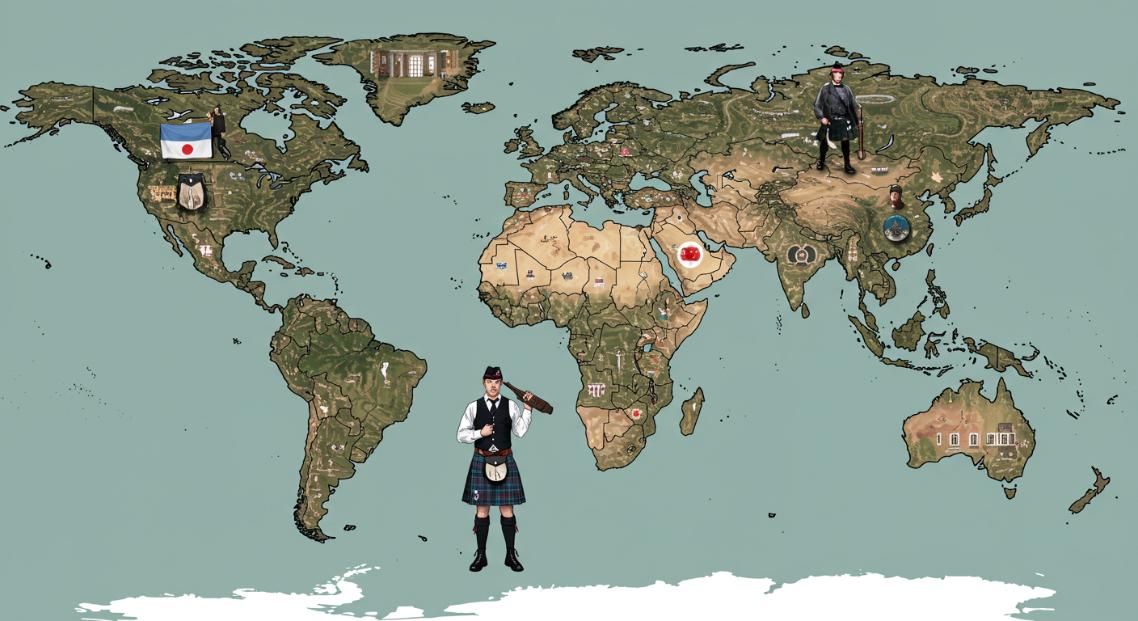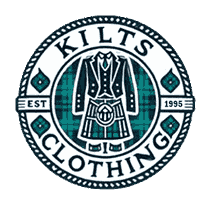Kilts Around the World: How Different Cultures Have Embraced Scottish Attire

The kilt, a symbol of Scotland's rich heritage, has gained widespread recognition across the globe. Although rooted deeply in Scottish tradition, this distinctive garment has transcended cultural boundaries and been embraced in various forms by cultures worldwide. From its early use in the Scottish Highlands to its adoption by different countries, the kilt has evolved into a powerful cultural symbol that unites people from other regions, backgrounds, and walks of life. This article explores how the kilt, once a humble piece of Scottish Highland wear, has become a global fashion statement.
The Origins of the Scottish Kilt
Before examining how the kilt has been embraced worldwide, it is essential to understand its origins. As we know it today, the kilt evolved from the ancient Gaelic dress known as the féileadh mór or "great kilt," a large piece of cloth wrapped around the body. This garment was designed to be practical for Highlanders, allowing for mobility and warmth in the rugged terrain of Scotland.
The kilt's modern form, known as the féileadh beag (small kilt), emerged in the 17th century. It consisted of two pieces of cloth—one for the front and one for the back—pleated at the back and fastened with a belt. This version of the kilt became associated with Scottish clans, as each clan adopted its distinct tartan pattern to symbolize family heritage.
The Kilt in Scotland: A National Icon
In Scotland, the Scottish kilt has always been prominent in national identity. The garment became a symbol of Scottish pride, worn by Highlanders and later by all Scots, particularly during significant events like weddings, Highland Games, and cultural festivals. The kilt's association with tartan patterns also solidified its connection to Scottish clans. Each tartan design represents a specific family, region, or heritage, adding meaning to the garment.
Today, the kilt continues to be a quintessential part of Scottish culture. It remains a key element of Scottish pride, whether worn during formal events or as part of national celebrations. Its timeless appeal ensures that the men's scottish kilt is more than just a piece of clothing—it is an enduring symbol of Scottish tradition and unity.
The Kilt in Ireland: Embracing Celtic Heritage
Though often associated with Scotland, the kilt also has a place in Irish culture. Like the Scots, the Irish share a Celtic heritage, and the kilt symbolizes this shared ancestry. In Ireland, kilts are worn during cultural events such as St. Patrick's Day parades and festivals, especially in regions with a strong Scottish-Irish connection.
While the Irish kilt closely resembles its Scottish counterpart, there are distinct differences. Irish kilts may feature different tartan patterns, often reflecting local or regional pride, or they may be worn with traditional Irish attire, such as a shamrock pin or Celtic jewelry. Much like in Scotland, Irish kilts represent pride in cultural heritage, making them a powerful symbol of national identity.
The Kilt in Canada: A Legacy of Scottish Immigration
Canada, with its strong Scottish heritage due to immigration, has long adopted the kilt as part of its cultural fabric. Many Canadian cities, especially those in the east, have sizeable Scottish communities that continue to celebrate their roots by wearing kilts. The garment is often worn during national celebrations, such as Canada Day, as well as at Highland Games and other Scottish cultural events.
In Canada, kilts are not just a reflection of Scottish ancestry but also an expression of multiculturalism. As a nation that embraces diversity, Canada has adopted the kilt as part of its broader cultural mosaic. The Canadian kilt often includes unique touches, such as custom tartans that blend Scottish traditions with Canadian symbols.
The Kilt in the United States: A Celebration of Scottish-American Heritage
The kilt's journey across the Atlantic to the United States is primarily attributed to the Scottish diaspora. Many Scottish immigrants brought their traditional attire when settling in North America. Over time, kilts have become synonymous with Scottish-American culture, particularly in regions like New England and the American Midwest, where large Scottish populations reside.
In the United States, kilts are commonly worn during events like the Highland Games, which celebrate Scottish traditions through athletic competitions, music, and dancing. The kilt has also found its place in popular culture, often worn by celebrities, musicians, and even political figures during cultural events. While kilts are often worn traditionally, they have also made their way into American fashion, incorporated into modern designs, and worn to express personal style.
The Kilt in the United Kingdom: Worn with Pride Across Britain
Outside Scotland, the kilt has also made its mark in the rest of the United Kingdom. England, Wales, and Northern Ireland have adopted the kilt for ceremonial purposes, especially in military contexts. The British army, for instance, has several regiments that continue to wear kilts as part of their formal uniforms, mainly regiments with ties to Scotland, such as the Black Watch.
In addition to its military use, the kilt is often worn at national events, such as royal ceremonies and festivals, where it serves as a symbol of Scottish heritage within the broader British identity. The UK's embrace of the kilt reflects the enduring influence of Scottish culture, particularly within British unity.
The Kilt in Australia and New Zealand: Celebrating Scottish Roots Down Under
In Australia and New Zealand, the kilt continues to be a symbol of Scottish immigration. Both countries have large Scottish-descended populations, particularly in cities like Melbourne and Dunedin. The kilt plays a significant role in celebrations such as the annual Highland Games held in various parts of the two countries. During these events, participants wear kilts, and competitions center around traditional Scottish sports.
In New Zealand, the kilt is also worn during cultural performances, often paired with bagpipes, dancing, and other elements of Scottish culture. The garment represents a shared heritage among Scots and their descendants while becoming a cherished part of New Zealand's cultural diversity.
The Kilt in Europe: A Fashion Statement Across the Continent
The influence of the kilt extends beyond the Anglo-Saxon world, reaching into Europe. In countries such as Germany, France, and Italy, kilts have become popular in various cultural and fashion contexts. German fashion designers have sometimes incorporated tartan patterns into their collections, reflecting the kilt's status as a fashion icon. In France, the kilt has been embraced by avant-garde designers and worn as part of modern street style.
In countries with significant Scottish or Celtic heritage, such as Belgium and the Netherlands, the kilt is worn during cultural celebrations, particularly around St. Andrew's Day or other national festivals. In these settings, kilts are often worn as part of more significant cultural performances, connecting people to their Scottish roots.
The Kilt in Asia: A Global Fusion of Traditions
In Asia, the kilt is not a traditional garment. Still, it has found a niche among fashion-forward individuals and communities interested in Scottish heritage. In countries like Japan and South Korea, the kilt has appeared in contemporary fashion, particularly in subcultures such as cosplay and alternative fashion. Japanese designers have occasionally incorporated tartan patterns into their collections, blending Scottish influences with Japanese aesthetics.
In India, the kilt has been worn during cultural festivals and international events that celebrate Scottish or Celtic traditions. This fusion of cultures reflects the kilt's global appeal, transcending its origins to become a symbol of international style and tradition.
Conclusion: A Timeless Garment with a Global Impact
The Scottish man in kilt has come far from its roots in the Scottish Highlands. It is worn worldwide, from the United States to Japan and everywhere in between. It serves as a symbol of Scottish heritage and a versatile garment embraced by different cultures for various purposes. Whether worn at festivals, in fashion, or during national celebrations, the kilt has evolved into a global icon, transcending its original boundaries and becoming a powerful expression of pride, tradition, and style.
As the kilt continues to be adopted by cultures worldwide, its legacy as a symbol of Scottish identity remains strong. Whether worn in its traditional form or reimagined in modern fashion, the kilt is a garment that unites people globally, allowing them to celebrate their shared heritage and embrace their cultural roots.


